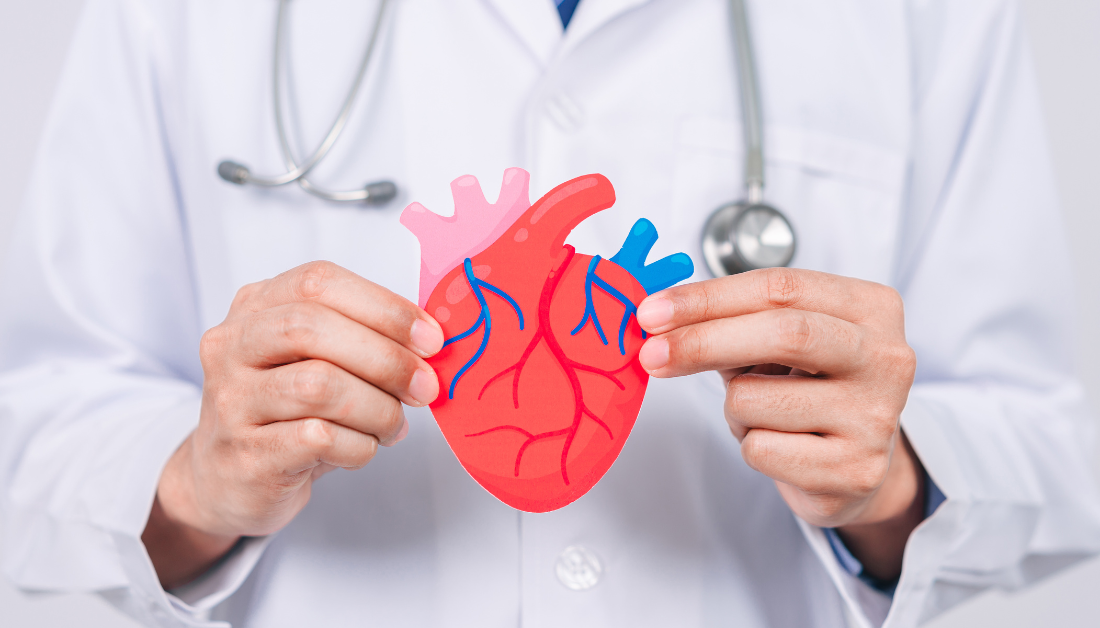

One University of Kentucky (UK) researcher has contributed to the resolution of a 60-year-old enigma about one of the body’s most critical organs: the heart.
Kenneth S. Campbell, Ph.D., the director of translational research in the Division of Cardiovascular Medicine at the University of Kentucky College of Medicine, assisted in the molecular mapping of a crucial region of the heart. The paper, titled “Cryo-EM structure of the human cardiac myosin filament,” was published earlier this month in Nature.
There are billions of cells in the heart. Sarcomeres are microscopic structures found in every cell. These are the components of muscle. Hundreds of myosin filaments are seen within each block. To put this microscopic level into context, if the heart is a continent, Campbell and colleagues are the explorers looking at single strands of hair.
“Each filament has roughly 2,000 molecules arranged in a really complicated structure that scientists have been trying to understand for decades,” said Campbell. “We knew quite a lot about the individual molecules, and people thought the myosins could be arranged in groups of six that were called crowns, but not much beyond that.”
The most intriguing revelation in the paper, according to Campbell, is that there are three different sorts of crowns. The second photograph below depicts their interactions.
“We think this means that heart muscle can be controlled more precisely than we had realized. We were also excited to see how myosin filament binding protein-C, another protein that is linked to genetic heart disease, sits within the structure. It gives us a new level of information about how the molecules are arranged in the heart,” said Campbell.
The team collaborated with experts from the University of Massachusetts Chan Medical School to create single-particle 3D reconstructions of the heart thick filaments. The images offer a fresh perspective on structural, physiological, and clinical observations.
This study is important for discovering new drug therapies for heart disease which Kentucky desperately needs,” said Campbell. “It gives us a much better understanding of how the molecules in our hearts interact.”
According to the Centers for Disease Control and Prevention (CDC), heart disease is the main cause of death in Kentucky, placing the state among the top ten states with the greatest death rate from the condition.
We’re interested in therapies for different kinds of heart failure and myopathies, where the heart muscles don’t work very well,” said Campbell. “Our research is one of many projects underway at the university to help come up with better therapies for heart disease.”
The heart samples were obtained from the Gill Cardiovascular Biorepository, which Campbell directs. Patients receiving cardiovascular care in the UK donate samples for research purposes.
“We started the Gill Cardiovascular Biorepository in 2008. With the help of a surgeon at UK HealthCare, we started collecting samples of myocardium from organ donors and from patients who were getting cardiac transplants,” said Campbell. “Now we’ve built a huge resource with roughly 15,000 samples from nearly 500 people. We also share these samples with research groups around the world. This study in Nature comes from one of those collaborations.”
Campbell, who works in both cardiovascular medicine and physiology, has turned her undergraduate degree in physics into a career focused on helping people.
“I used to care a lot about math and molecules,” said Campbell. “But after hearing a friend who’s a cardiothoracic surgeon talk about patients, I realized I could take my scientific skills and do research that has a chance of helping people. It’s given my science purpose.
“And to the patients at UK HealthCare who’ve donated samples to us, we hope they know how much they’ve helped drive world-class research to, hopefully, help others who get sick.”
For more information: Cryo-EM structure of the human cardiac myosin filament, Nature (2023).
more recommended stories
 36-Week Pre-eclampsia Screening May Reduce Term Risk
36-Week Pre-eclampsia Screening May Reduce Term RiskA New Preventive Strategy for Term.
 Cardiovascular Risk and Sudden Cardiac Death in Diabetes
Cardiovascular Risk and Sudden Cardiac Death in DiabetesRising Sudden Cardiac Death (SCD) Risk.
 Poor Kidney Function and Alzheimer’s Biomarkers Explained
Poor Kidney Function and Alzheimer’s Biomarkers ExplainedPoor kidney function may influence levels.
 Walking Speed Before Hip Replacement Predicts Recovery
Walking Speed Before Hip Replacement Predicts RecoveryNew Evidence Points to a Simple,.
 Neuroblastoma Drug Combo Extends Survival in Models
Neuroblastoma Drug Combo Extends Survival in ModelsA Promising Shift in High-Risk Neuroblastoma.
 How Soybean Oil Impacts Weight Gain and Metabolism
How Soybean Oil Impacts Weight Gain and MetabolismWhy Soybean Oil May Affect Metabolism.
 Coffee and Cognitive Function: Evidence Review
Coffee and Cognitive Function: Evidence ReviewA new narrative review in Cureus.
 Colorectal Cancer Screening Rates Low in Adults 45–49
Colorectal Cancer Screening Rates Low in Adults 45–49Recent UCLA research reveals that colorectal.
 Gut Immune Cells and Long-Lasting Antiviral Protection.
Gut Immune Cells and Long-Lasting Antiviral Protection.Breakthrough Findings on How Gut Immune.
 Mild Pancreatic Duct Dilatation Signals Higher Cancer Risk
Mild Pancreatic Duct Dilatation Signals Higher Cancer RiskEarly Structural Changes Offer Critical Clues.

Leave a Comment